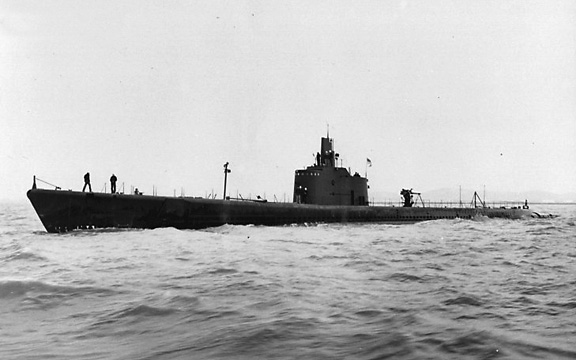
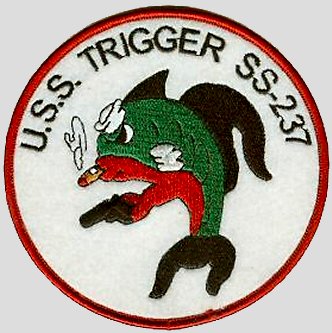
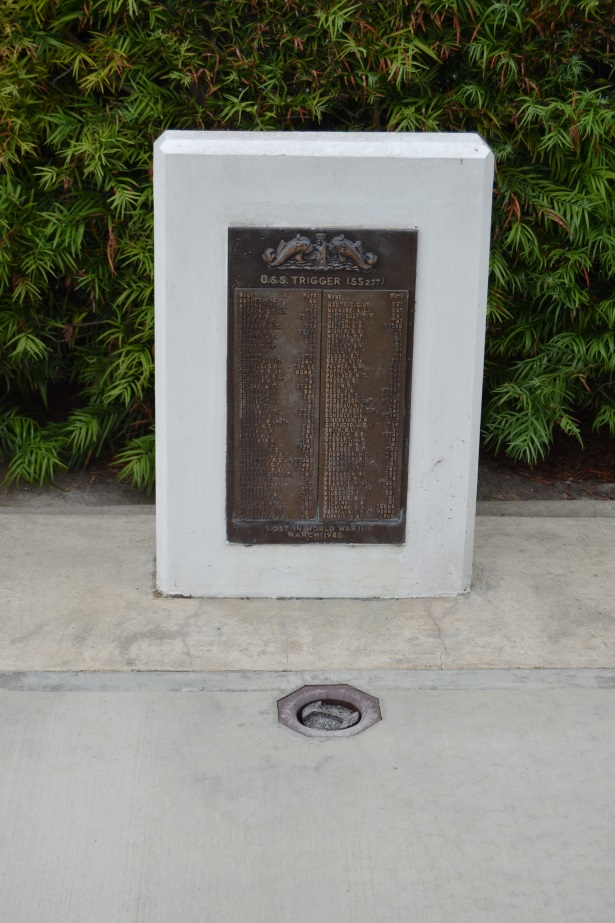
Click on Photo for a high resolution version of Plaque showing the names of the lost.



Click on Photo for a high resolution version of Plaque showing the names of the lost.
Compiled by Paul W. Wittmer and Charles R. Hinman, originally from: U.S. Submarine Losses World War II, NAVPERS 15,784, 1949 ISSUE
Departing Guam on 11 March 1945, TRIGGER, under the command of Cdr. D. R. Connole, headed for the Nansei Shoto area to conduct her twelfth war patrol. She was to provide rescue services for carrier based aircraft, as well as to carry out a normal offensive patrol.
After having sent several routine messages enroute to her area, TRIGGER reported her first action on 18 March. She stated that she had made a seven-hour end around on a convoy she had previously reported, and had attacked. She sank one freighter and damaged another. The other two merchantmen of the convoy and four escorts proceeded west.
For some time, allied forces had been aware of a large Japanese restricted area west of the Nansei Shoto in the East China Sea. The area had been marked "restricted" in captured enemy notices to mariners, and allied forces were obliged to accept that the area was mined, and to keep out of it. Submarines had been warned of its presence and given its position, and were in the habit of proceeding around it to the north when patrolling the Formosa Strait and the adjacent China Coast. The convoy which had been attacked by TRIGGER was heading for this restricted area. It had always been strongly suspected that there were gaps in the mine-lines, since the area was too big to be at once completely and effectively mined.
Immediately after receipt of TRIGGER's report of the attack she had made, CornSubPac told her to give as much information as possible concerning the subsequent movements of the convoy, in order to help establish the existence of a safe passage through the restricted area. On 20 March TRIGGER reported that the attack she had made on the convoy had taken place at 28° 05'N, 1263"° 44"'E, and that she had been held down for three hours by escorts following the attack. When last seen or heard the convoy was heading for the restricted area, but TRIGGER had been unable to regain contact when she was able to surface.
On 24 March, TRIGGER was given further orders. On 25 March she was to move west and patrol between 29°N and 31°N, west of the Nansei Shoto chain, remaining clear of restricted areas and outside the 100 fathom curve.
On 26 March TRIGGER was told to proceed at best speed to 31°N, 132'E, to form a coordinated attack group, known as Earl's Eliminators, with SEADOG and THREADFIN. The group was to be commanded by Cdr. E. T. Hydeman in SEADOG. This message to TRIGGER required an acknowledgement, but on the same day she sent a weather report which did not contain an acknowledgement, and she never was heard from again. On 28 March, SEADOG reported that she had been unable to communicate with TRIGGER since the formation of the wolfpack. To clarify the situation for the other submarines, TRIGGER was given another assignment and told to acknowledge, and the wolfpack was disbanded on 30 March.
After many attempts to contact her by radio had failed, TRIGGER was ordered on 4 April to proceed to Midway. When she failed to arrive by 1 May 1945, she was reported as presumed lost in enemy water on her twelfth patrol, after a long and illustrious career.
Since she knew the position of the enemy restricted area containing mines, and had been told to keep clear of it, it is extremely doubtful that TRIGGER's loss was due to a mine. On the afternoon of 28 March a two hour long depth charge attack was conducted by Japanese planes in cooperation with ships in 32° 16'N, 132° 05'E. SILVERSIDES, HACKLEBACK, SEADOG and THREADFIN, all near the area, heard the attack. THREADFIN obtained two torpedo hits on a DE in 31° 49.5'N, 131° 44'E, and she was depth charged by accompanying escort vessels. Eighteen charges were dropped on her, none particularly close, but she reported that the charges were set for 450 feet, which made them much more dangerous than the usual run of depth charges. An hour later, THREADFIN reports, "Many distant strings of depth charges and several heavy explosions heard from what was believed to be the eastward. (In the opposite direction from the location of our attacks). It sounded as though someone was getting quite a drubbing." No other submarine in the vicinity reported having been attacked, although all reported hearing many explosions.
The Japanese report of the above attack states, "Detected a submarine over eight times and bombed it. Ships also detected it-depth charged. Found oil pool of 1 x 5 miles in size the following day." Since it is extremely doubtful that THREADFIN received sufficient damage to have left the oil pool described by the Japanese, it must be presumed that TRIGGER was lost in this action. That it occurred two days after TRIGGER had been told to acknowledge a message, and none was ever received is not considered unusual. Conditions often forced submarines to delay transmissions for considerable periods of time.
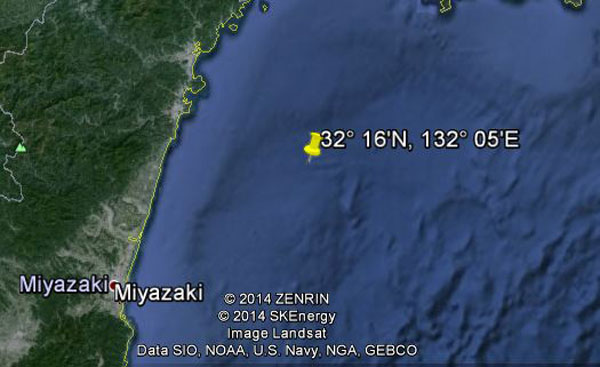
Google Earth image
TRIGGER is credited with one freighter sunk and another damaged on her final patrol. This makes a total of 27 ships sunk, for 180,600 tons, and 13 ships damaged, for 102,900 tons, during the ship's entire career. Her first patrol was in the Aleutians, but no attacks were made, since no worthy targets were contacted. Going to the Empire in the area south of Honshu for her second patrol, TRIGGER sent a freighter to the bottom, and damaged two large tankers and a freighter. TRIGGER's third patrol was a mining mission is well as an offensive patrol; it, too, was in the Empire. She saw a large freighter blow up and sink, when it hit a mine she had laid, and also sank two freighters by torpedo attacks. Also on 10 January 1943, TRIGGER torpedoed and sank the Japanese destroyer OKIKAZE near Honshu. TRIGGER covered the Palau Wewak (New Guinea) traffic lanes on her fourth patrol and succeeded in sinking one freighter and damaging two more. Again in the area south of Honshu, TRIGGER on her fifth patrol sank a large freighter and damaged an aircraft carrier and a tankers
Her sixth and seventh patrols were in the East China Sea. On her sixth she sank three good-sized tankers and a freighter, doing damage to another freighter. Her seventh resulted in the sinking of four good-sized freighters, one tanker, and one large transport. The eighth patrol of this vessel was made in the Carolines on the Truk-Guam route, and she sank a large freighter-transport and an escort vessel. She sank four freighter-transports as well as a patrol vessel near Palau on her ninth patrol; she also damaged a large tanker, two freighters and a sampan. TRIGGER's tenth patrol, as her last did, covered the northern Nansei Shoto area. She received partial credit for sinking a small tanker, which was sunk cooperatively with SALMON. TRIGGER's eleventh patrol was in the Empire, but resulted in disappointingly few enemy contacts and no attack opportunities. This ship was awarded the Presidential Unit Citation for her fifth, sixth and seventh patrols.
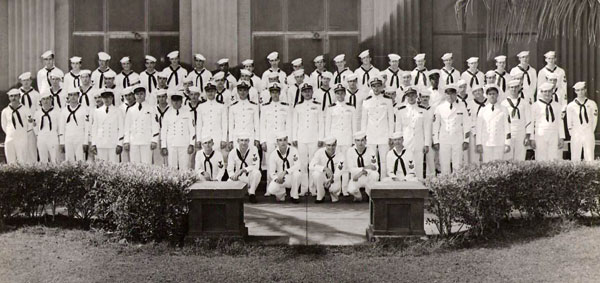
Click here for complete and accurate listing of men lost on USS Trigger
See also Ed Howard's Final Patrol page on USS Trigger (external link).
The Los Angeles Pasadena Base of the USSVI is the officially recognized custodian of the National Submarine Memorial, West. 